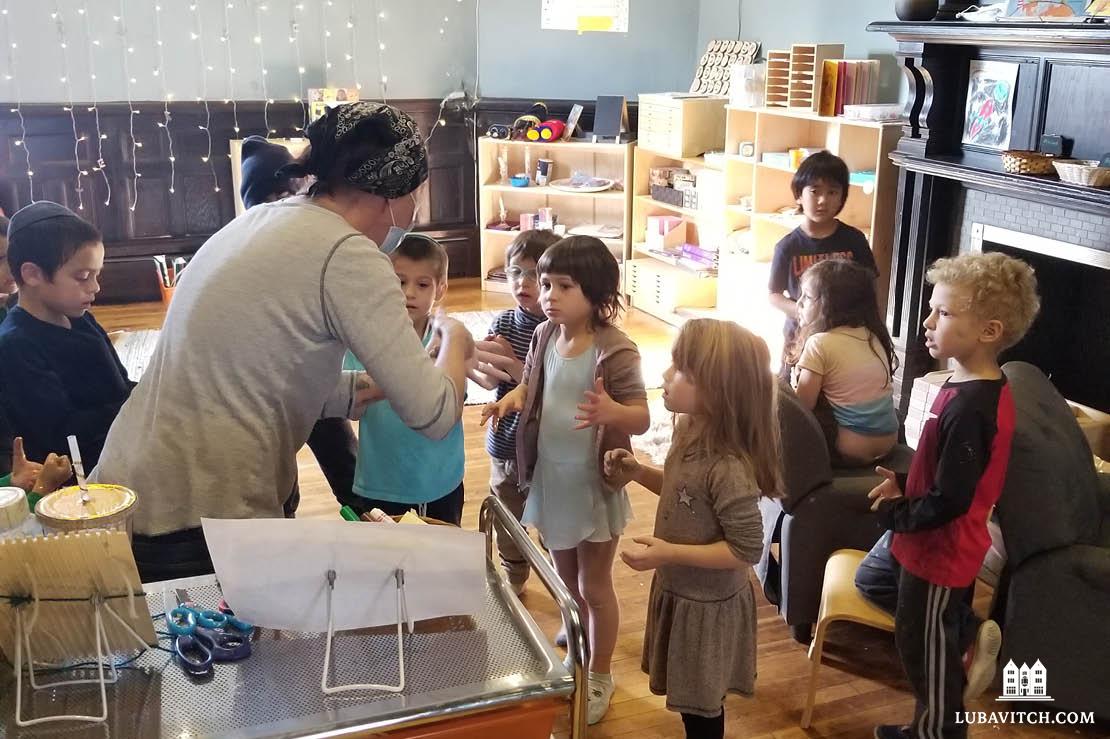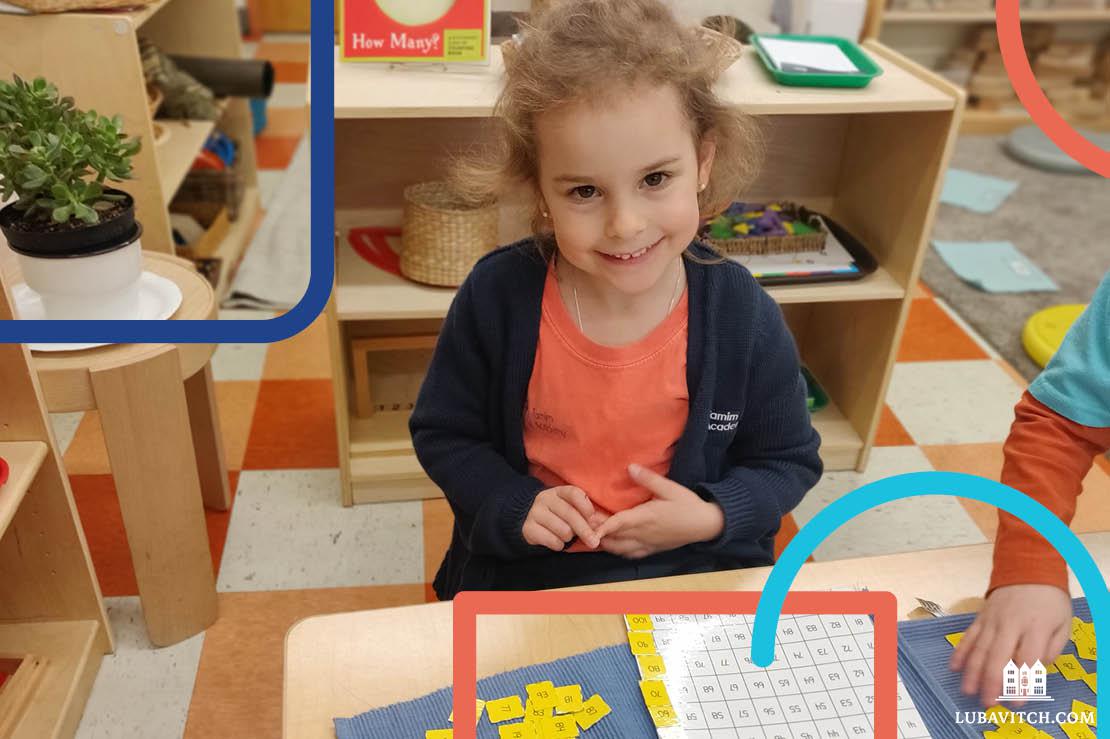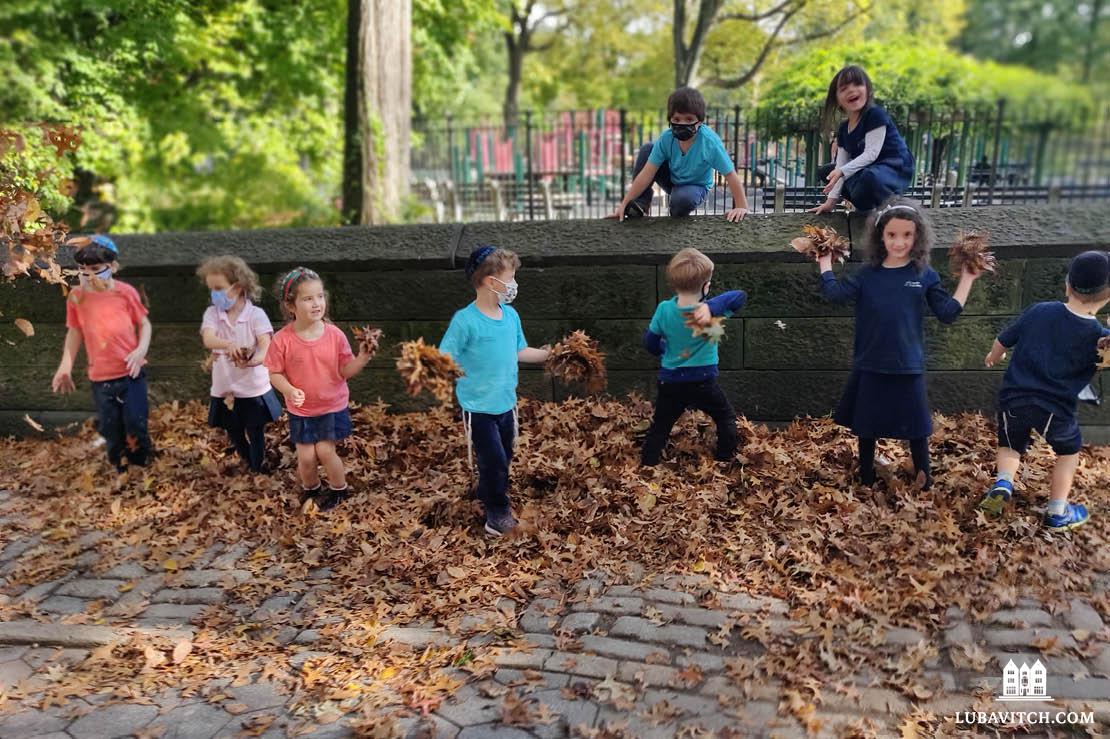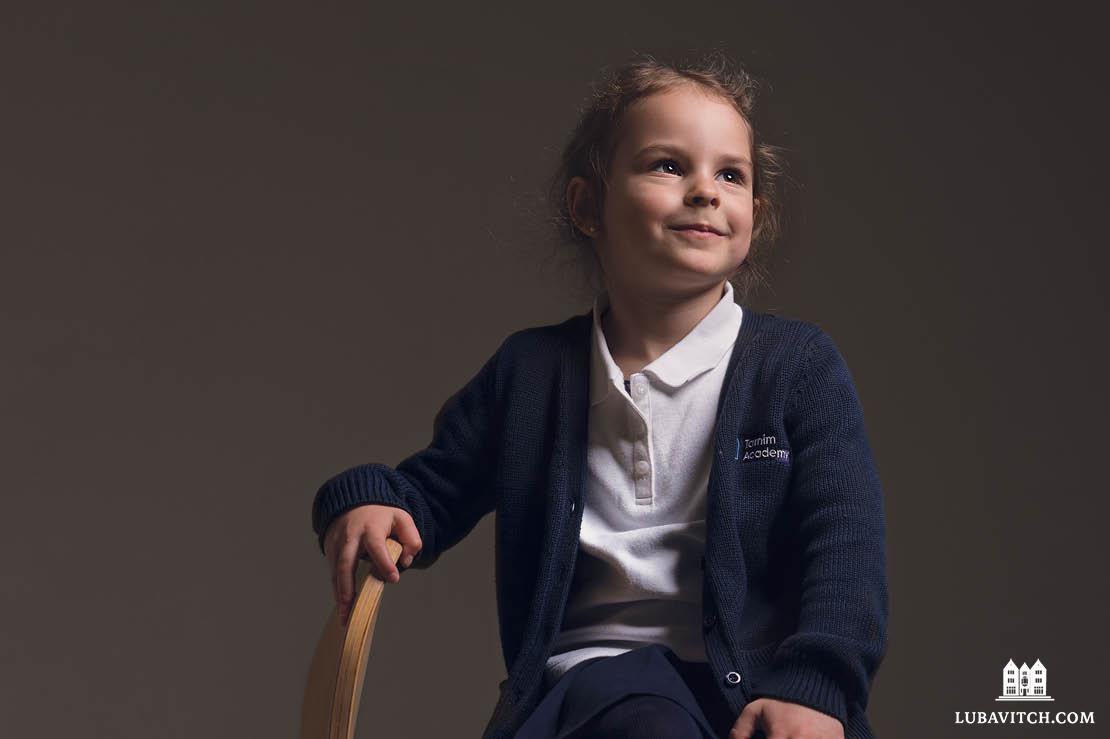“Create it and I’ll come.”
Maryashie Deren put down the phone in disbelief. This was the third call she had received from a New York parent. Panic-stricken at the prospect of spending the winter locked down in a tiny apartment with their children, they were desperate to escape the city. And they all wanted the same thing: a Jewish kindergarten class in Greenwich, Connecticut.
She glanced at the calendar. It was June, just eight weeks before the start of the school year. Could she possibly assemble a school on such short notice? Then again, it was something she had wanted to do for a long time.
As the director of the Chabad preschool in Greenwich for the past two decades, Maryashie had watched class after class of children don their paper sashes and handmade crowns and step proudly onto the graduation stage to sing the Jewish songs they’d learned so well over their three years at preschool. Then they walked out the door, and often out of Jewish life, forever.
Only a quarter of her students go on to attend a Jewish day school. The Greenwich Gan, which uses a Reggio-inspired curriculum, attracts a diverse swath of Greenwich Jewish parents. But most of them are not ready to make a long-term commitment. “People are very concerned that their children get an excellent secular education,” she says. “They feel a Jewish education will compromise that.”
The moment had come to change that calculation, Maryashie decided. Eight weeks later, Tamim Academy of Greenwich opened its doors. Using a Montessori-style classroom, the school offered Hebrew-language immersion, and an interdisciplinary, evidenced-based curriculum of general and Judaic studies to satisfy even the pickiest parents.
This fall, in the midst of the pandemic, three other new schools like the Greenwich Tamim opened in cities up and down the East Coast. They were small kindergarten classes of between six and twelve children, and they did not attract much publicity—almost no one noticed. But the parents, teachers, and directors of the fledgling Tamim Academies knew that this was the beginning of something much bigger.

The Possible School
Chabad preschools are enormously popular with non-Orthodox Jewish parents. Yet the phenomenon that Maryashie witnessed is a national one: A 2020 census of American Jewish day schools by the Avi Chai Foundation found that children from non-Orthodox families constitute only around 15 percent of the total number enrolled in day schools, a tiny sliver of all children in non-Orthodox American homes.
A family’s choice of school emerges out of a complex blend of motivations, financial, ideological, and practical. In the last two decades, however, Jewish day schools have been a particularly hard sell. For parents who want their children to receive the best possible preparation for college, splitting the day between Judaic and secular studies seems self-defeating. At the same time, the demands of the traditional, same-curriculum-in-half-the-time model have made day schools reticent to adopt the individualized learning models that have become the norm in many private schools.
If Jewish schools could address these concerns, would that make a difference?
It is a question that Holly Cohen, CEO of Tamim Academies, has spent the last decade trying to answer. The executive director of the Kohelet Foundation from 2009 to 2019, Holly had managed a generous endowment dedicated solely to improving American Jewish day schools and increasing enrollment. “We threw tens of millions at these schools,” she says. “Scholarship programs, STEM, parent learning programs, blended learning. We were throwing stuff against the wall and seeing what would stick.”
Tamim’s approach to Jewish studies may be their most dramatic departure from the traditional day-school model.
But widespread, immersive change did not come easily. Finally, in 2014, Holly approached David Magerman, Kohelet’s founder and principal donor, and suggested they try something new: “Let’s start from scratch, white box, and build the school that we know is possible.”
In 2016, Kohelet Yeshiva Lab School was born. Now a successful elementary and middle school in Merion Station, Pennsylvania, where Holly lives, Kohelet uses progressive educational techniques—child-centered classrooms, a focus on social and emotional development, and individualized instruction—that are still unusual above the preschool level.
“With the KYLS, we felt like the work of the foundation was done,” Holly says, “we proved to ourselves that starting fresh was key. The question became, can we build a model that’s scalable?”
Holly had long admired Chabad preschools for their openness to innovation and the selfless dedication of the representatives who ran them. “I would ask them why they don’t expand their preschools into day schools, and they would tell me that it’s just too difficult, too complicated, too overwhelming,” she says. She realized that they needed a partner, someone to do the heavy lifting of building a school for them.
At the newly created Tamim Academies, Holly and her colleagues began to envision a network of Jewish schools, easy to set up and run, with curriculum, teacher training, and marketing coming from a central headquarters: “Almost like a franchise model.” The schools would employ progressive educational techniques and the most recent pedagogical research to educate the whole child, mind, body, and soul. And, like Chabad, they would be everywhere.

Learning with the Body
The director of the Chabad Early Learning Center on Manhattan’s Upper West Side for the past thirty years, Pearl Stroh had become accustomed to long waitlists of eager parents. But now those parents were fleeing the city in droves, and the preschool was melting before her eyes.
The school shrank from 110 children to 55. Yet Pearl persisted with her plans to open a new Tamim Academy. Like Maryashie, she often got requests from parents who loved the nurturing, hands-on approach of the CELC to expand into the elementary grades, but she had shrugged them off. Preschool was her specialty. And there were plenty of Jewish day schools in Manhattan already. Why open another?
But when she saw the Tamim curriculum, she knew this was the school that she, and her parents, had been waiting for.
“I’ve always wondered why the principles of early childhood education aren’t carried over into elementary,” Pearl says. “Teacher-directed learning only helps children who learn auditorily and visually. It doesn’t help children who learn with their body, which is the majority.”
Progressive principles form the foundation of the Tamim curriculum. “It’s about educating the whole child, and that means attending to every part of their development,” says Tamim’s chief impact officer, Bryna Leider. (Tamim, pronounced with the Sephardic emphasis on the last syllable, means whole, or complete.) But she emphasizes that the schools are not wedded to a particular methodology. “We focused on the good in existing models and mapped it to the research.”
In a Tamim classroom, the children gather periodically for lessons, sometimes in smaller, differentiated groups, then disperse to practice the skills using the activities on the shelves, or through art and imaginary play. The approach allows for a very high level of individualization, says Ruth Landsman, general studies teacher and educational director of Tamim NYC. “If we’re doing a math activity, there are fifteen different things on the shelf that they can choose from.”
Ruth earned two master’s degrees in education and taught at the Bank Street College of Education before coming to work at Tamim. The teacher’s role in this kind of class, she says, is to gently guide the children toward increasingly challenging activities. “We have this idea that your brain is elastic. Whenever a kid says that something is hard, the other kids jump in right away and say ‘Your brain is stretching!’ If something is too easy, I’ll say, ‘How can you make this more challenging for yourself?’ There’s a lot of executive functioning and metacognition, which is such an important skill for learning.”
Of course, this requires that the teacher have an intimate knowledge of each student’s capabilities. To this end, the school uses a learning management platform, which allows teachers and parents to track children’s progress, both during work time, when the children “capture” (photograph) and save completed activities on the class iPad, and during lessons, when they complete assessments on the platform.
Esther Starobinets looked at several Manhattan day schools before enrolling her son Yoni at Tamim. “It’s unique to find a school in New York that’s ensuring that each student is thriving individually. They’re not just following a rote curriculum,” she says. When Yoni and his friends expressed an interest in outer space, Ruth launched a unit on the solar system and the phases of the moon.
Esther says the teachers’ attention to Yoni extends far beyond his academic progress. “They notice the tiniest changes in him, and they’ll ask me about it,” she says. She often receives voice notes about his progress. “I can hear the love in their voices.”
An Interdisciplinary Approach
Melissa Litwack and her husband were also watching the mass exodus from the tristate area this summer, and wondered if they should join in. “We wanted to get away from the epicenter, and it was a moment of transition for us anyway,” she says. Their son’s school had just closed for good; Melissa and her husband were working remotely for the foreseeable future; and a new Jewish school had just opened in Vermont, where Melissa’s parents live. They decided it was time to go.
The Burlington Tamim is the state’s first Jewish day school. Director Draizy Junik grew up in the city, where her parents are Chabad representatives. “We see a lot of love for Judaism from the kids,” she says. “A lot of the kids would not have been in a Jewish school if not for them–the first generation of Chabad emissaries to Vermont. They really see the value of what they’re getting.”
The schools would employ progressive educational techniques and the most recent pedagogical research to educate the whole child, mind, body, and soul. And, like Chabad, they would be everywhere.
Jewish education is not the Litwaks’ top priority, Melissa says, so she was surprised when Cole told her that Yahadut, as it’s called at Tamim, is his favorite part of school. “He loves the storytelling and the way that they create art and do plays. He really relates to the mystical part of Judaism. They bring it to life in a fun way.”
Tamim’s approach to Jewish studies may be their most dramatic departure from the traditional day-school model. Rather than segregating general and Judaic studies into separate parts of the day, they’re integrated as much as possible. “In a Jewish school, there’s always a push and pull around what needs to be prioritized,” Bryna explains. “One way to make it work is to multitask. Then we’re not sacrificing, we’re enhancing. We’re giving kids the ability to deeply delve into what they’re learning.”
Interdisciplinary units are designed to help children see connections between the Torah portion, or upcoming Jewish holiday, and science, math, ELA, and art, bringing home the message that Judaism touches every area of life. In the Vermont Tamim this fall, a science lesson about force and a social studies unit on transportation were timed to coincide with the Torah portion that describes Abraham’s journey into Egypt.
A Hebrew-speaking teacher is present in all Tamim classrooms for at least half the day, providing language immersion with the goal that the children will be fluent by the time they graduate.
Peggy Price wasn’t thinking about any of this when she enrolled her son in the Vermont Tamim this fall. David’s public school class would be meeting on a hybrid model, and she had decided to switch him to a smaller school where he could learn in-person for the year. A reading specialist who teaches graduate courses on literacy and the science of reading, she was impressed with Tamim’s phonics program, which was more advanced than the one used by the local district.
Four months in, Peggy and her husband have already decided to keep David at Tamim for good. “It’s just been such a wonderful experience,” she says. David loves the weekly ski trips—Draizy takes full advantage of Vermont’s natural resources—and Peggy’s appreciation for the Judaic program is growing by the day. “David’s been more excited than ever for the holidays, even though we’re not doing all the usual social events,” she says. “He really is internalizing a lot of love and pride about being Jewish.”

An Evolving Model
As Tamim students move into middle school, hands-on activities give way to pencils, paper, and computers. But the element of choice remains. “We still want them exploring, discovering, and delving into areas of interest,” Bryna says. “It becomes more about tackling real community problems. They’ll be spending more time outside the school building.”
Though the curriculum is fully developed through eighth grade, Bryna expects that it will change significantly before the first Tamim classes graduate. “This is something that will continue to evolve and grow. If you want kids to learn, everyone has to be a learner. We can’t expect that kids are going to learn those skills if the teachers, administrators, and headquarters are not.”
The centralized Tamim model is designed to avoid calcification. “It’s the hardest thing to run a school,” Bryna says. “Just the day-to-day is so hard and so lonely, that taking on that big, institutional change is just too much. We’re not just setting up these schools, getting them thriving, and letting them go. We recognize that they need constant support. If you’re alone, you’re going to be exhausted, but if you have an engine behind you, you’ll be able to grow.”
That support extends to every aspect of school operations. Chabad reps interested in starting a Tamim Academy are provided with templates that map out their future school’s budget to the last detail. While new schools receive substantial seed funding during their first three years, this kind of advance planning allows directors to avoid the financial pitfalls that beset many schools, Holly says. “They’re in a good position to have financial models that will ultimately work.”
The high cost of tuition, which varies depending on location—$10,500 in Vermont, almost three times that in New York—continues to be the biggest challenge facing Jewish day schools. All four schools offer some financial aid, and, says Holly, Tamim plans to establish a scholarship fund that will be available as a matching grant to all schools in the network. “The school budgets are designed to be as lean as possible, with the central office providing teacher training, marketing, and administrative support.” The Tamim financial model is designed to create a break-even scenario after the first several years. “If we’re successful, it will mean that donor contributions will be dedicated to tuition scholarships rather than overhead costs.”
All four Tamim schools are expecting increased enrollment next year, and with several more in the planning stages, Holly hopes that Jewish parents will soon be able to move to any city in America, confident that they can find a high-quality Jewish school there. And if it isn’t there yet, they can create one quickly.
Better People
The engine behind them may be powerful, but ultimately, Tamim schools rely on people—the teachers and directors—to be living examples of the kind of Jews they hope their students will become. At the Tamim in Boca Raton, Florida, lessons about sensitivity to others have a personal element: Dr. Justine Green, the school’s principal and general studies teacher, is a specialist in accommodating students with disabilities. She’s also hard of hearing.
Justine wrote a children’s book, Completely Me, about her disability, which she reads often with her students. When she invites her students to sit beside her, they’ve learned to ask her if she would like them to sit on the side of her good ear, so she can hear them.
Recently, in the midst of a game that required her to describe each child, she turned to one student and said, “I’m looking at someone who has two ears.” The boy responded with frustration: “Everyone has two ears. That’s not a good description.”
“But then he caught himself,” Justine recalls. “He said, ‘I’m sorry. I didn’t mean that.’ For them to be culturally aware of the differences, for them to be open and compassionate and comfortable with people with disabilities, that’s huge. If they can be better, kinder people, then I’ve done my job.”
Tamim’s holistic approach puts academic learning in a broader context, Justine says, and allows children to absorb knowledge at their own pace—several of her five-year-old students have already learned to read. “Everything that we do is based on Common Core standards. We’re just teaching in a way that children can comprehend and put into practice. I’m proud and honored to be part of the next wave in Jewish education.”
This article appeared in the Lubavitch International Magazine – Spring 2021 issue. To subscribe and gain access to previous magazines please click here.

Reuven Slurzberg
Inspiring article. if anyone can accomplish this it you, Holly. I wish you and your team continued success.